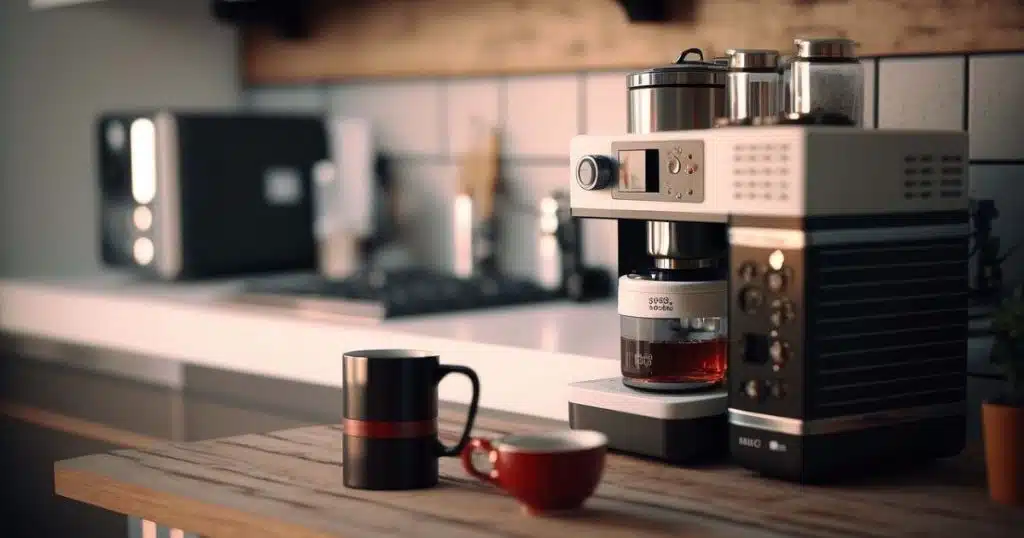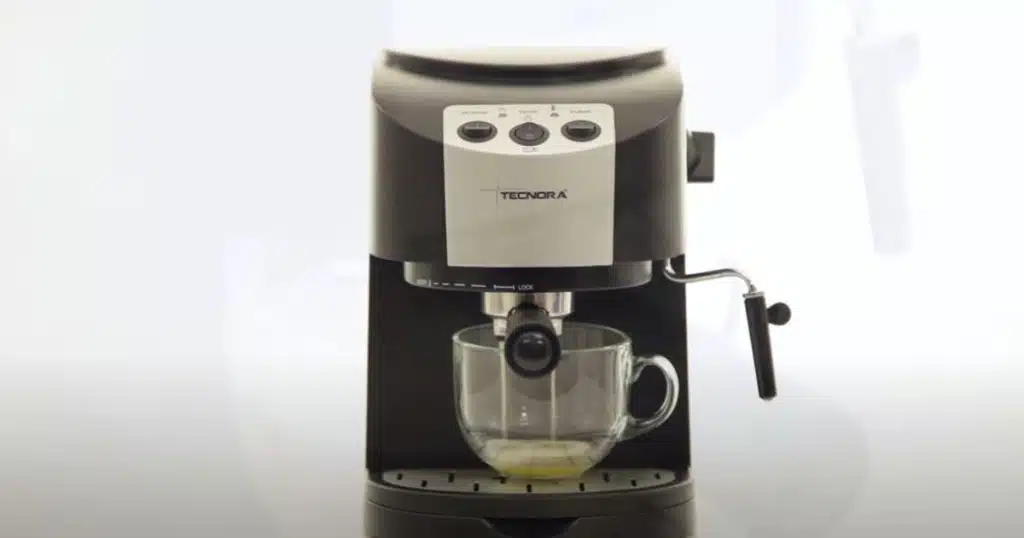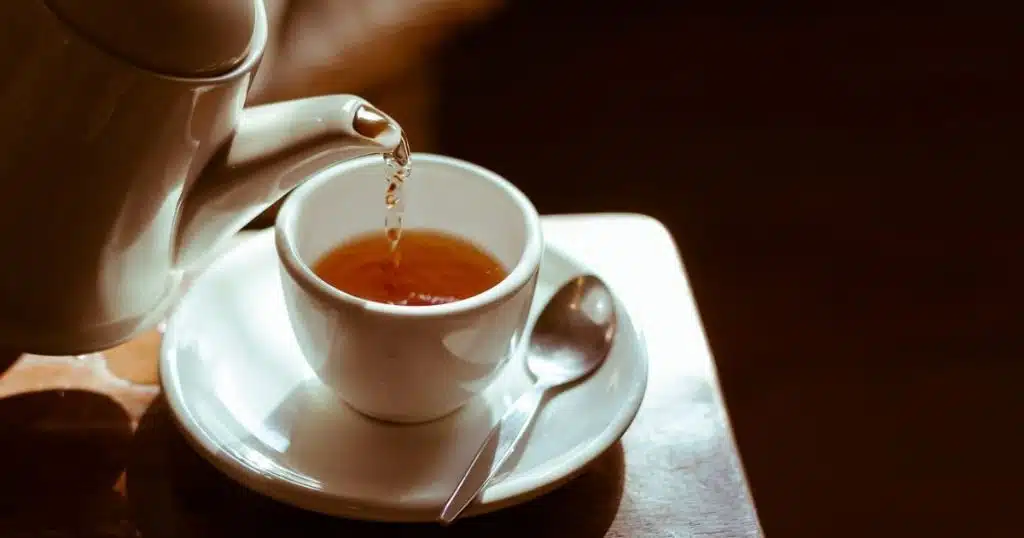As an Amazon Associate I earn from qualifying purchases.
Can coffee machines make tea? The short answer is yes, but the process and results vary depending on the type of coffee machine. This article explores how different coffee machines, including drip makers, single-serve models like Keurig, and French presses, can brew tea. We also dive into the differences between coffee and tea brewing mechanisms, the best practices for making high-quality tea with each method, and tips for cleaning and optimizing your machine. Additionally, we’ll compare alternatives like electric kettles and tea infusers for those seeking a more tailored brewing experience.

Can Coffee Machines Really Make Tea?
Yes, coffee machines can be used to make tea, but the results vary depending on the type of machine. Drip coffee makers can brew tea by replacing coffee grounds with loose tea leaves or tea bags, making it a convenient option for larger quantities.
Single-serve machines like Keurig can use tea pods or refillable pods with loose tea for a quick cup. However, temperature control may be limited, which can impact the flavor of delicate teas like green or white tea. While not ideal for all types, coffee machines offer a practical way to brew tea with some adjustments for optimal taste.
What are the Differences in Brewing Mechanisms Between Coffee and Tea Machines?
The brewing mechanisms of coffee and tea machines differ significantly due to the unique requirements of each beverage. Coffee machines, such as drip coffee makers, espresso machines, and single-serve brewers, use high temperatures and pressure to extract flavors from finely ground coffee beans. Drip coffee makers heat water to around 90-96°C (194-205°F) and let it flow through a filter containing ground coffee. Espresso machines use even higher pressure to force hot water through compacted coffee grounds, resulting in a concentrated brew.
Tea machines, on the other hand, are designed to handle a wider range of temperatures and steeping times, tailored to the specific type of tea being brewed. Delicate teas like green and white teas require lower temperatures (around 70-80°C or 158-176°F), while black teas and herbal infusions often need hotter water, similar to coffee. Instead of using pressure, tea machines focus on controlling steeping time, allowing tea leaves to infuse in water, which can be crucial for extracting the right balance of flavors without bitterness.
While coffee machines prioritize high-temperature water flow and pressure, tea machines emphasize temperature precision and steeping duration to match the varied needs of different teas, creating a more tailored brewing experience.
Can Single-Serve Coffee Makers Effectively Brew High-Quality Tea?
Single-serve coffee makers can brew tea, but achieving high-quality results depends on the specific machine and type of tea. These machines, like Keurig or Nespresso, offer convenience by using pre-packaged tea pods or refillable pods with loose tea leaves.

However, their effectiveness in brewing high-quality tea is limited by their fixed water temperature and lack of steeping control. For delicate teas, such as green or white tea, the water temperature in single-serve coffee makers may be too high, leading to bitterness. Meanwhile, black and herbal teas, which require hotter water, fare better in these machines.
The rapid brewing process often lacks the time needed for the full flavor extraction that traditional steeping methods provide. While single-serve coffee makers can produce an acceptable cup of tea for those seeking quick preparation, they may not match the depth of flavor and nuance achieved through more specialized tea brewing methods.
How Does the Design of Tea Machines Differ From Coffee Machines?
The design of tea machines differs from coffee machines mainly in their focus on temperature control and steeping time. Tea machines are designed to brew various types of tea, each requiring specific water temperatures and steeping durations. For example, green and white teas need lower temperatures (70-80°C or 158-176°F) and shorter steeping times to avoid bitterness, while black teas need higher temperatures. Tea machines often feature adjustable temperature settings and timers to ensure the optimal brew for different tea varieties.
In contrast, coffee machines are designed to extract flavor quickly using high-pressure water flow, especially in espresso machines, or a consistent high-temperature flow in drip coffee makers (90-96°C or 194-205°F). This process suits coffee, which needs rapid extraction from finely ground beans. Coffee machines prioritize pressure and flow rate for consistent strength, while tea machines focus more on achieving precision in steeping for flavor and aroma.
How Does Water Temperature Affect Tea Quality?
When using coffee machines to brew tea, understanding water temperature is essential to ensure the quality of your tea. Coffee machines are typically designed to heat water to high temperatures suitable for brewing coffee, usually around 200°F (93°C). However, different types of tea require specific water temperatures for optimal flavor extraction:
- Green and White Teas: These teas are delicate and should be brewed with water between 150°F to 185°F (65°C to 85°C). Coffee machines might overheat the water, leading to a bitter or astringent taste in these teas.
- Oolong Teas: These need slightly hotter water, around 185°F to 205°F (85°C to 96°C). A coffee machine with adjustable temperature settings could be suitable for oolong.
- Black Teas and Herbal Infusions: These robust varieties can handle boiling water at 212°F (100°C), which aligns more closely with a standard coffee machine’s capabilities.
Step-by-Step Guide: How to Brew Tea with a Coffee Machine
Brewing tea with a coffee machine is a convenient way to enjoy a warm cup of tea without the need for specialized equipment. Whether you have a drip coffee maker, a single-serve machine like a Keurig, or a French press, each can be adapted to brew tea effectively. Here’s how to do it.

Brewing Tea with a Drip Coffee Maker
What You’ll Need: Loose tea leaves or tea bags, fresh water, coffee filter.
- Clean the Coffee Maker: Run a cycle with water only to remove any coffee residue, ensuring a pure tea flavor.
- Prepare the Tea: Place loose tea leaves or tea bags into the coffee filter. Use 1 teaspoon of tea or 1 tea bag per cup of water, adjusting for desired strength.
- Fill the Water Reservoir: Add fresh, cold water to the reservoir, using the appropriate amount for the number of cups.Filtered water can elevate the taste.
- Start the Brew Cycle: Turn on the coffee maker, allowing hot water to flow through the tea and extract its flavors.
- Serve the Tea: Pour the brewed tea into your cup and add milk, lemon, or sweeteners as desired.
- Clean Up: Rinse out the carafe and filter holder to prevent tea residue from affecting future brews.
Brewing Tea with a Single-Serve Coffee Maker (e.g., Keurig)
What You’ll Need: Tea pod or refillable pod, loose tea leaves or tea bag, fresh water.
- Prepare the Pod: Use a refillable pod filled with loose tea or a pre-packaged tea pod.
- Fill the Water Reservoir: Add fresh water to the reservoir. For better results, use filtered water.
- Insert the Pod:Insert the pod into the machine’s brewing chamber.
- Select Brew Size: Choose a smaller cup size for stronger tea or a larger size for a lighter brew.
- Start the Brew: Press the brew button, allowing hot water to infuse through the pod.
- Remove the Pod and Serve: Carefully take out the pod and enjoy your tea hot or iced.
- Clean the Machine: Wipe spills and rinse the pod holder for the next use.
Brewing Tea with a French Press
What You’ll Need: Loose tea leaves or tea bags, hot water, French press.
- Add Tea to the French Press: Use 1 teaspoon of loose tea or a tea bag per cup.
- Boil Water Separately: Heat water to the appropriate temperature: 70-80°C for green tea, 90-95°C for black or herbal tea.
- Pour Water Over the Tea: Add hot water to the French press, covering the tea leaves.
- Steep the Tea: Let it steep for 3-5 minutes.
- Press the Plunger: Slowly press down to separate the tea leaves.
- Serve and Enjoy: Pour into a cup and add any preferred flavors.
Tips for Best Results
- Clean Thoroughly: Avoid cross-contamination of flavors by cleaning the machine after each use.
- Adjust for Strength: Adjust the tea-to-water ratio to achieve a stronger or milder brew.
- Use Fresh, Filtered Water: This ensures a cleaner, better-tasting tea.
Alternatives to Using a Coffee Maker for Tea
While coffee machines can be used to make tea, there are other methods that may yield better results:
Electric Kettle with Temperature Control: Ideal for green and white teas that require lower water temperatures.
Traditional Teapot: Provides a more authentic tea brewing experience with the ability to steep tea leaves directly.
Tea Infusers: Great for single cups, enabling you to steep loose leaves directly in your cup without needing a machine.
Final Thoughts
While coffee machines aren’t specifically designed for brewing tea, they can be a convenient option for tea lovers looking for a quick solution. Drip coffee makers, single-serve machines, and even French presses can brew a satisfying cup of tea if used correctly. By following the right steps and understanding the limitations, you can make the most of your coffee maker and enjoy a variety of beverages at home.
This article offers a thorough guide on using coffee machines for tea, with practical advice, step-by-step instructions, and comparisons of different machine types. It’s designed to help readers explore new possibilities with their coffee machines while making the process simple and enjoyable.
A common question can coffee machines make tea, answer is yes, but
Coffee machines overheat water, so brewing green tea in a coffee machine can make it bitter.
Amazon and the Amazon logo are trademarks of Amazon.com, Inc, or its affiliates.
Leave a Reply